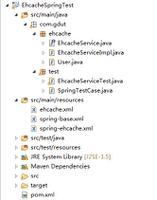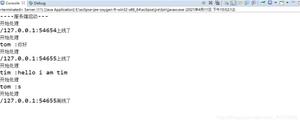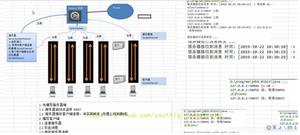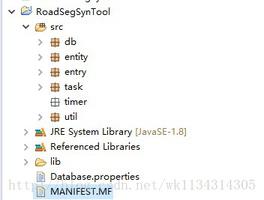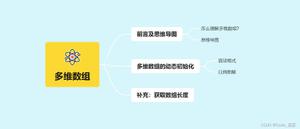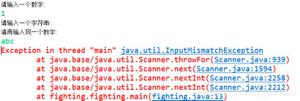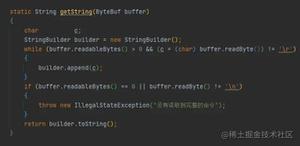Java 第八周总结

2. 书面作业
1.List中指定元素的删除
1.1 实验总结
- list中可以通过list.get(i)来获取具体第几个的元素的值,再通过compareTo来对比
- 通过in.hasNext可以当作扫描器,以空格为分隔,切割各个元素,通过add分别输入到list中
2.统计文字中的单词数量并按出现次数排序(尽量不要出现代码)
2.1 伪代码(简单写出大体步骤)
- 输入同5-2,不变
- 相同的单词输入Map里
Map<String,Integer> coun =new TreeMap<String,Integer>();if(set.contains(a))
{
if(coun.containsKey(a))
coun.put(a, coun.get(a)+1);
else
coun.put(a, 2);
}
set.add(a);
- 因为排序要求有变,所以通过collection比较器来实现排序
List<Map.Entry<String,Integer>> list = new ArrayList<Map.Entry<String,Integer>>(coun.entrySet()); Collections.sort(list,new Comparator<Map.Entry<String,Integer>>(){
@Override
public int compare(Entry<String, Integer> o1, Entry<String, Integer> o2) {
return (o2.getValue() - o1.getValue());
}
});
2.2 实验总结
- Map以按键/数值对的形式存储数据,和数组非常相似,在数组中存在的索引
- 关于怎么使用,一般是选择Map的子类,而不直接用Map类。如:HashMap,TreeMap
Map<String,Integer> coun =new HashMap<String,Integer>(); - remove(Object key) 从map中删除键和关联的值
- put(Object key,Object valus)将指定值与指定键相关联
2.3 截图你的提交结果(出现学号)
3.倒排索引(题目5-4)
3.1 伪代码(简单写出大体步骤)
for(int i=0;i<arr.size();i++){ int b=i+1;//用来给行数加1,因为数组都是从0开始的,对行数不友好
map2.put(arr.get(i), i); //第几行的字符串全部加到map2中
//System.out.println(map2);
String[] s1=arr.get(i).split(" ");//把这一行的字符串按单词分开
for(int j=0;j<s1.length;j++){ //分开的一个个的单词
String str=s1[j];//str 代表这一个个的单词
if(!map3.containsKey(str)){//如果map3中没有这个单词
//value=map2.get(str);
String sss=String.valueOf(b);
map3.put(str, sss);//把这个单词加到map3里,value等于行数i
}
else{
value1=map3.get(str);//获取这个单词在map2中的行数
map3.put(str, value1+","+b);//放到map3里
//System.out.println(map3);
}
}
}//把各种值存到map里面。map2是存放每行的信息,map3是存放单词信息
for(Entry<String, String> a : map3.entrySet()){
System.out.println(a);
}
3.2 实验总结
- 搞清楚每个map是干什么用的很重要,不然很容易混乱
- 使用map.get(key)可以获取到key对应的value值,从而对这个值进行一些操作
- ArrayList的get方法,可以获取动态数组的每个值,通过arr.get(i)遍历数组。
4.Stream与Lambda
编写一个Student类,属性为:
private Long id;
private String name;
private int age;
private Gender gender;//枚举类型
private boolean joinsACM; //是否参加过ACM比赛
创建一集合对象,如List,内有若干Student对象用于后面的测试。
4.1 使用传统方法编写一个方法,将id>10,name为zhang, age>20, gender为女,参加过ACM比赛的学生筛选出来,放入新的集合。在main中调用,然后输出结果。
Student a;for(int i=0;i<6;i++)
{
a=list.get(i);//获取每一个Student的类的值
if(a.getId()>10&&a.getName().equals("zhang")&&a.getAge()>20&&a.getGender()==Gender.weman&&a.isJoinsACM())//进行筛选
list2.add(a);//符合条件的加到list2中
}
4.2 使用java8中的stream(), filter(), collect()编写功能同4.1的函数,并测试。
4.3 构建测试集合的时候,除了正常的Student对象,再往集合中添加一些null,然后重新改写4.2,使其不出现异常。
5.泛型类:GeneralStack(题目5-5)
5.1 GeneralStack接口的代码
interface GeneralStack<T>{ T push(T item);
T pop();
T peek();
public boolean empty();
public int size();
}
while(true){ String str=in.next();
if(str.equals("quit"))
break;
else
{
int m=in.nextInt();
int n=in.nextInt();
if(str.equals("Integer")){
System.out.println("Integer Test");
ArrayListGeneralStack stack=new ArrayListGeneralStack();
for(int i=0;i<m;i++){
int a=in.nextInt();
stack.push(a);
System.out.println("Push:"+stack.peek());
}
for(int j=0;j<n;j++){
Integer b=(Integer) stack.pop();
System.out.println("Pop:"+b);
}
stack.toString();
int a=0;
for(int i=0;i<=stack.size()+1;i++){
if(!stack.empty()){
Integer b=(Integer) stack.pop();
a=a+b;
}
}
System.out.println("sum="+a);
System.out.println(stack.getClass().getInterfaces()[0]);
}
if(str.equals("Double")){
System.out.println("Double Test");
ArrayListGeneralStack stack=new ArrayListGeneralStack();
for(int i=0;i<m;i++){
Double a=in.nextDouble();
stack.push(a);
System.out.println("Push:"+stack.peek());
}
for(int j=0;j<n;j++){
System.out.println("Pop:"+stack.peek());
stack.pop();
}
stack.toString();
Double a=0.0;
for(int i=0;i<=stack.size()+1;i++){
if(!stack.empty()){
Double b=(Double) stack.pop();
a=a+b;
}
}
System.out.println("sum="+a);
System.out.println(stack.getClass().getInterfaces()[0]);
}
if(str.equals("Car")){
System.out.println("Car Test");
ArrayListGeneralStack stack=new ArrayListGeneralStack();
for(int i=0;i<m;i++){
Car a = new Car(in.nextInt(),in.next());
stack.push(a);
System.out.println("Push:"+stack.peek());
}
for(int j=0;j<n;j++){
Car b=(Car) stack.peek();
stack.pop();
System.out.println("Pop:"+b);
}
stack.toString();
for(int i=0;i<stack.size();i++){
if(!stack.empty()){
Car b=(Car) stack.pop();
String name=b.getMame();
System.out.println(name);
}
}
System.out.println(stack.getClass().getInterfaces()[0]);
}
}
}
5.2 结合本题,说明泛型有什么好处
- Java 泛型的参数只可以代表类,不能代表个别对象
- 下两种形式(假设 T 是泛型的类型参数,C 是一般类、泛类,或是泛型的类型参数):T 实现接口 I 。T 是 C ,或继承自 C 。一个泛型类不能实现Throwable接口。这里使用的是T.
5.3 截图你的提交结果(出现学号)
6.泛型方法
6.1 编写方法max,该方法可以返回List中所有元素的最大值。List中的元素必须实现Comparable接口。编写的max方法需使得String max = max(strList)可以运行成功,其中strList为List类型。
6.2 编写方法max1,基本功能同6.1,但让其所返回的值可以赋予其父类型变量。如有User类,其子类为StuUser,且均实现了Comparable接口。编写max1使得User user = max1(stuList);可以运行成功,其中stuList为List类型。也可使得Object user = max(stuList)运行成功。
3. 码云上代码提交记录
以上是 Java 第八周总结 的全部内容, 来源链接: utcz.com/z/393741.html

